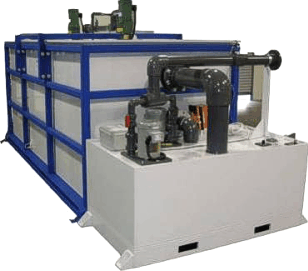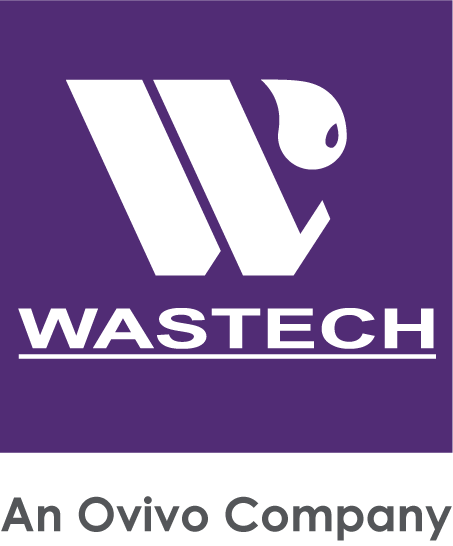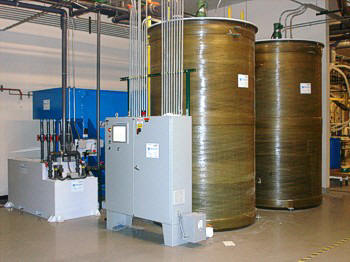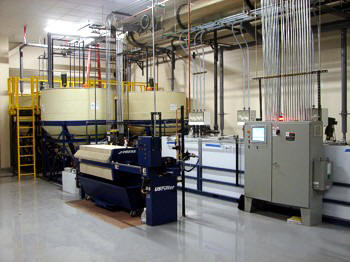WASTE WATER TREATMENT SYSTEMS
FOR THE PHOTOVOLTAIC SOLAR CELL
MANUFACTURING INDUSTRY
A white paper by Wastech Controls & Engineering, Inc.
![]()

| Acid Waste Neutralization (AWN) systems adjust the pH of process waste water to within acceptable limits (typically 6 – 9) before discharging to the facility sewer connection. Reagent chemicals such as Caustic Soda and Sulfuric Acid are metered into reaction tanks at a rate proportional to the difference between the measured pH value and the target set point. Waste water sources may include process tools, de-ionized (DI) Water regeneration waste and scrubber blowdown. Incorporating the latest innovations in control strategy, such as feed forward control and hybrid mixing design, allow these systems to offer excellent performance and reliability with a smaller footprint and reduced chemical consumption with than traditional system designs.
Design Criteria:
Configuration Options:
Wastech also offers the MetFloc™ chemical line that reduces the process steps, lowers chemical consumption and minimizes sludge generation. Using MetFloc™ simplifies the control strategy, requiring only pH adjustment; it does not rely on other measurements such as oxidation reduction potential (ORP). The clear water can be routed to an AWN or discharged directly, depending on the discharge limits. The filtrate is disposed of as solid waste.
Concentrated Bath Treatment is used to treat concentrated acid solutions received from the cleaning baths found at the start or in the intermediate steps of a Plating Line, or from the baths of a Rack Strip tool (located downstream of a Plating Line). These solutions often exceed 10% strength of Sulfuric or Nitric acids and have high concentrations of heavy metals. While discharges from the baths may be infrequent or periodic, the solutions cannot be treated by the AWN or Heavy Metal Removal systems due to the strong acid concentration, and they are often collected for off-site disposal. The Concentrated Bath Treatment System can accept these concentrated solutions, and neutralize them in batches to the point where the waste can be metered into a Heavy Metal Removal system. Design Criteria:
Polymer/Photo-Resist Filtration systems are used to remove the polymer materials that are etched off of wafers following a screen printing and chemical vapor deposition or plating step. These materials precipitate out of waste water with low pH and increase turbidity to the discharge. This filtration system accepts batch dumps from etching tools, and then reduces the pH to facilitate filtration. The solution is pumped through filter bags and discharged to an AWN. The solids are collected in the filter bags and disposed of as solid waste. Design Criteria:
Ion Exchange (IX) is used to reclaim and reuse DI Water from rinse water waste. The system employs activated carbon filtration followed by Cation / Anion exchange to remove contaminant ions. This restores the water's resistivity and allows it to be reused in the process. The system uses Sulfuric Acid and Caustic Soda to regenerate the cation and anion resins. Inlet and outlet conductivity is measured to control the regeneration cycles and product water quality. The cation and anion resin canisters feature the Kinetico® valve, which manages the counter-current regeneration cycles automatically. This patented valve technology eliminates dozens of actuated valves, simplifying system design and controls, as well as reducing consumption of regeneration chemicals. Standard systems are equipped with carbon filters, 5-micron filter bags at the inlet and outlet of the cation and anion canisters, and a UV lamp reactor at the discharge. Design Criteria:
|
|
|



